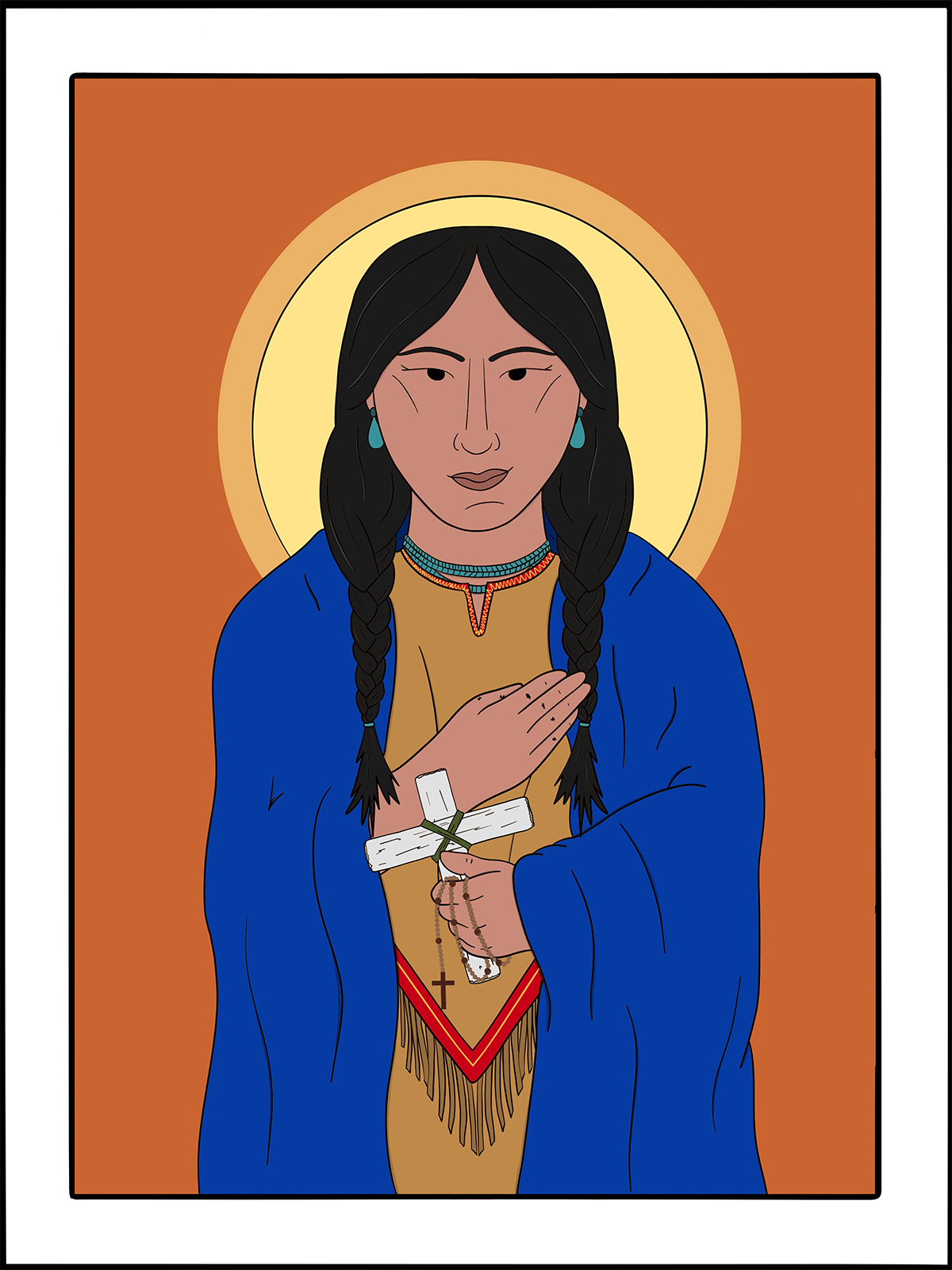
April 17
Kateri Tekakwitha
Lay Contemplative, 1680
art by Rev. Kirsten Kohr of Uhrichsville, Ohio Almighty and everliving God, who opened the heart of Kateri Tekakwitha to receive the Good News of Jesus Christ and to devote her life to your service: Grant us the same zeal of devotion to persevere in faith through the trials and tribulations of our lives, through Jesus Christ our Lord. Amen.
Tekakwitha, “She who bumps into things,” was born in the Mohawk village of Ossernon in upstate New York around 1656. Her childhood and adolescence were marked by hardship. A smallpox epidemic, which claimed the lives of her parents and younger brother, also scarred her face and severely impaired her vision. Her aunt and uncle, as adoptive parents, attempted to pressure her to marry beginning at age 11, but she resisted every attempt.
Moved by the preaching of Jesuit missionaries, Tekakwitha followed in the path of her late mother and converted to Christianity. She was baptized on Easter Sunday, 1676, at 19 years of age. As part of her conversion, she took the name Kateri, in honor of Catherine of Siena. Kateri Tekakwitha devoted her life to chastity, pledging to marry only Jesus Christ, and asking the Virgin Mary to accept her as a daughter.
Her piety was mocked and derided by her fellow villagers, some of whom threatened her life. She fled to a village south of Montreal, where, with her friend Marie-Therese, she attempted to begin a monastic community of indigenous women. They were dissuaded by the local priests, who believed they did not have enough experience to begin such a community. Kateri therefore accepted an “ordinary” life of vowed singleness and good works among the people, especially the elderly and sick.
At age 24, she succumbed to a serious illness. Tradition accords her final words as being “Jesus, I love you,” as she entered eternal life on the Wednesday of Holy Week, 1680. Following her death, it was reported that her body softened and her face took on the appearance of a child, even including a smile. The pockmarks of her childhood smallpox faded, and her skin became smooth. Pilgrimages were made to her grave as early as 1684.
Kateri Tekakwitha is known as the Lily of the Mohawks, and was the first Native American to be canonized in the Roman Catholic Church, where she is considered the patron of ecology and the environment, as well as of persons in exile.
Excerpted directly from “Lesser Feasts and Fasts 2022,” p. 194-195.
Lessons and Psalm 1 Kings 19:19-21
Psalm 6
Matthew 8:18-22

